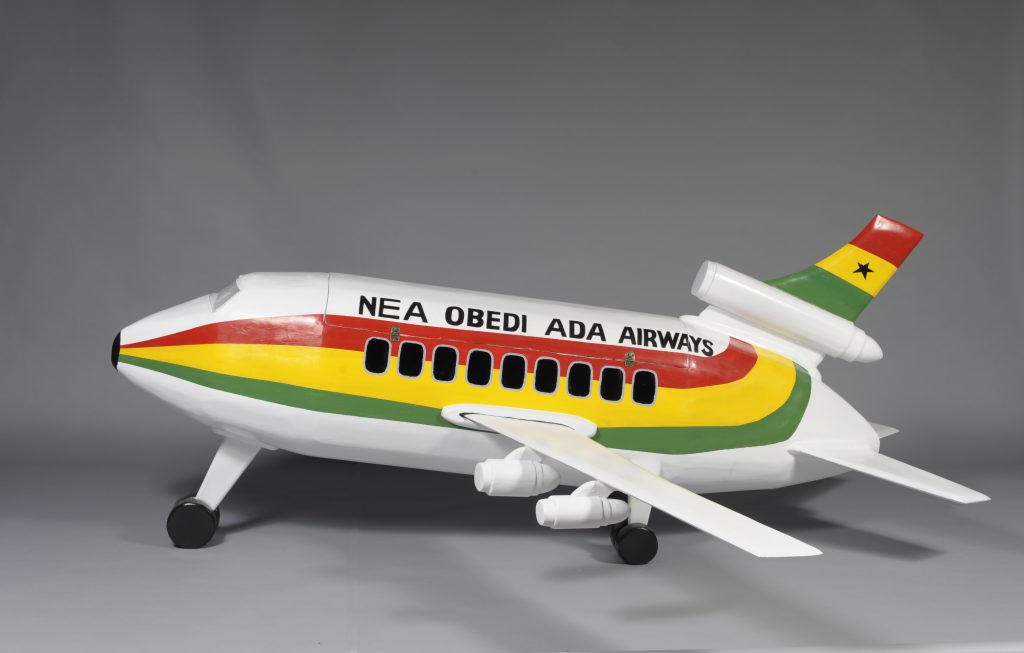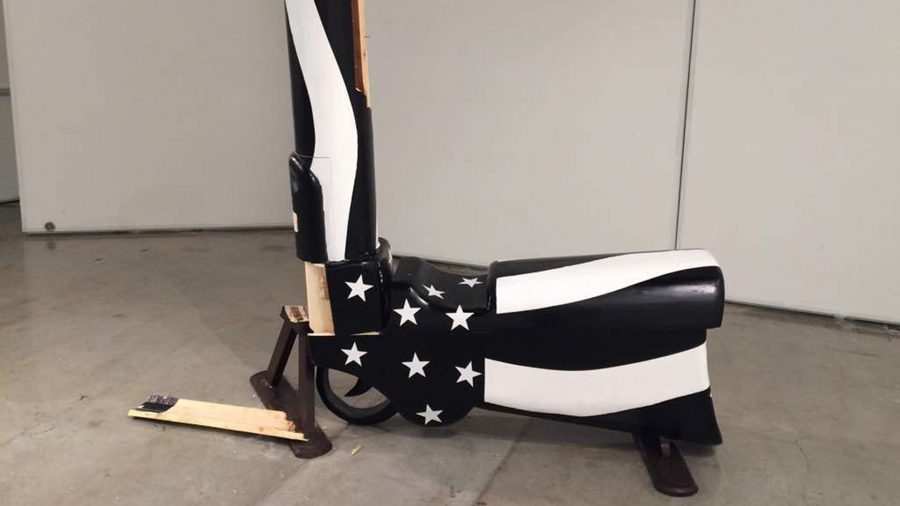By Madison Lotenschtein
madison-lotenschtein@uiowa.edu
Think coffins. Think cobwebs and fear. Think Count Dracula.
Stop.
Eric Adjetey Anang, a Ghanaian-born artist, begs to differ.
He constructs beautiful coffins, each with its own meaning and symbolization. A 9-foot coffin, with a black and white interior is painted to look like an American flag.
Unlike a normal coffin, this one can figuratively fit in any pocket or purse. Molded into the shape of a gun, Anang addressed gun violence in the most haunting of ways. He sent the perfect message.
RELATED: Cooking up a musical storm in Iowa City
Anang’s coffins will be on display Sept. 16 in the IMU Black Box Theater (third floor). Six coffins will be on display. The exhibition doors open at noon and close at 5 p.m. The artwork will stay for onlookers to see until Dec. 10.
“Eric makes these coffins to embody his own personal ideas and those of his patrons. They form a creative dialogue about our life now and in the afterlife, and the afterlife of coffins as art” said, Cory Gundlach, UIMA Curator of the Arts of Africa, Oceania and the Americas.
Ghanaian art possesses a sense of truth within it. The art crosses over with what the artists see and what they say. Gundlach found there to be a dearth of contemporary African art in the museum.

After connecting with Anang via Facebook, the two decided to have a presentation at the UI. Anang will also stay at the UI from Oct. 1 to Nov. 18 and work as an artist in residence. During that time, he will make two new coffins and work with art students.
Anang’s grandfather started the profession of designing coffins. While growing up around the shop, he became inspired by his grandfather and those who worked around him. When his grandfather died, Anang had two choices: He could either go to college or take up his grandfather’s profession.
“It’s going to be something of a different trend,” Anang said. “Rather than getting a white-collar job. I do love it. I basically started from nowhere, and here I am today.”
Between the two generations, the practice of designing coffins has lasted for nearly 60 years and recently come into the public eye.
A coffin, start to finish, takes about two weeks for Anang to construct the final product. All the coffins, of course, are made of wood. Using oil-based paints and glossy acrylics, he creates masterpieces full of color and detail.
Previously, wooden coffins were made only for Ghana’s wealthy. Commoners were left to make do with woven, basket-like coffins. Now, beautifully made coffins go to those who helped others and had a life well-lived. Money matters very little once you’re six-feet under.
Some have viewed his work as slightly controversial. In Ghana, people don’t believe Anang’s work is art; coffins are made only for the dead. But Anang believes differently.
“I think everybody should imagine or dream up the coffin they would want to be buried in,” said African art Professor Christopher Roy.
Anang tries to send controversial and important messages through his coffin work.
He has forged a coffin with a pile of plastics on top of it, to expose environmental issues. A coffin in the form of bee, which represents the unsteadiness of the ecological system of today.
A coffin with fireflies embedded on it symbolizes Anang’s childhood, for it is now rare to see them glow and twinkle at night. Everything is disappearing.



